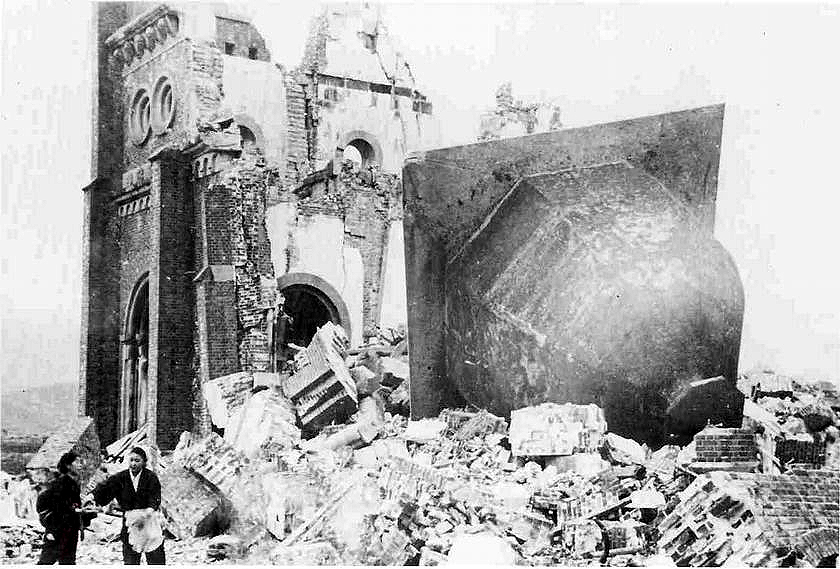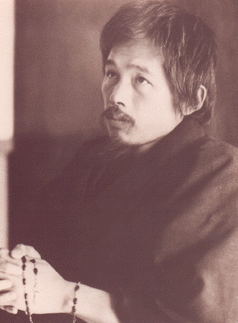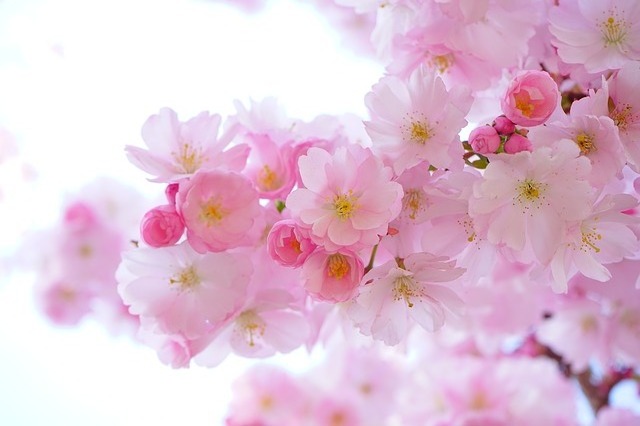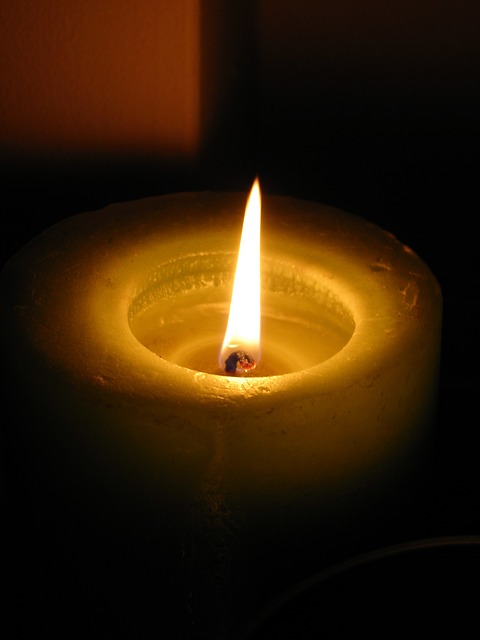Remembering Hiroshima and Nagasaki, 70 years later
The following reading was a powerful time of memorial and call to prayer as part of our August 9 worship.
Filled with compassion for the man with the withered hand, Jesus reached out and healed on the Sabbath, breaking with his culture and tradition and Jewish Law (Mark 3:1-6).
On this Sabbath, Sunday, August 9, 2015, let us with Jesus reach beyond our thought patterns, the traditions of our families, the comforts of church and community, across an ocean and back seventy years to a moment that changed the course of history….
On August 9, 1945, at 11:02 a.m., an atomic bomb was dropped by the U.S. on the city of Nagasaki, Japan with the equivalent force of 22,000 tons of conventional explosives; exposed human skin was scorched up to 4 kilometres away.
Three days earlier, the U.S. had dropped another atomic bomb on the city of Hiroshima with equally devastating effects.
While there are wide discrepancies in the estimations of people killed, a recent article in The Globe and Mail cited that the bomb dropped on Hiroshima ultimately claimed about 140,000 lives, and the bomb on Nagasaki about 80,000 lives. There were also the continuing effects from injuries and radiation.
The bombs turned both cities and lives and bodies into burned and bloodied wastelands.
The Christian community, after three centuries of persecution, was centred in Nagasaki at the Urakami Cathedral in the district of Urakami. The bomb was dropped on Nagasaki only 500 metres from this cathedral; here is an image of it in ruins. About 8,000 Christians of that community were killed by the bomb.

The book, A Song for Nagasaki (by Paul Glynn, Eerdmans, 1990), tells the story of Dr. Takashi Nagai.
Dr. Nagai was the dean of radiology at the Nagasaki Medical College. Because of his exposure to radiation during his groundbreaking research and practice and teaching, he had already been diagnosed with terminal leukemia before the bomb was dropped. Like the cathedral, the medical college was located only 500-700 metres from the epicenter of the bomb, and was reduced to ashes. About 800 professors, students and medical workers were killed.
Dr. Nagai survived and, immediately after the bombing, worked round the clock with others to save the injured and dying.
He returned to his home to find it destroyed and his beloved wife Midori burned to death.
Formerly an atheist, Dr. Nagai had many years earlier become a Christian, learning particularly the power of prayer from his reading of Pascal, and was a dedicated member of the Urakami Cathedral, now shattered.

Dr. Nagai wrote: “Walking with God through Urakami’s nuclear wasteland has taught me the depths of His friendship.”
The author of A Song for Nagasaki goes on to say:
To many the mushroom cloud is a sign of despair, heralding the end. Nagai’s faith transformed it into the cloud of another Exodus, leading the people away from the scientific slavery of a new Egypt. Only when Jerusalem was devastated and the people led away captive into Babylon did they understand the beauty of Sion. Looking out at the nuclear wasteland Nagai said with the faith of Isaiah: “God will turn (Jerusalem’s) devastation into Eden, and the wasteland into a garden of Yahweh.”
In the midst of losing everything – his hospital, his cathedral, his wife, his home — Dr. Nagai prayed. It was prayer that enabled him – although dying and surrounded by devastation – to serve God in the Urakami community and to minister to the world for six more years after the bombing, until his death in 1951. He was an instrument of God’s peace, leading his community in the rebuilding of a wooden church to replace the cathedral until a new one could be built, writing many books that became known around the world, being a spiritual and physical healer and inspiration to countless people.
Though Urakami and Dr. Nagai were poverty-stricken, he used a large part of money he received from a culture award to have 1,000 cherry blossom trees planted around the cathedral ruins, in school yards and along streets.
From ashes to a garden of Yahweh. Dr. Nagai’s continuous prayer and service in love are a witness to us of a whole life of Sabbath, given to God.
Seventy years after the bombing, on this Sabbath day, we like Dr. Nagai are called to prayer.
After the horrors of August 1945, the peace article in the Japanese constitution was drafted to say “…the Japanese people forever renounce war as a sovereign right of the nation and the threat or use of force as means of settling international disputes.”
But now the Japanese government is gaining support to make changes to the constitution that would allow for the building of a National Defense Force.
In 2013, fourteen Japanese Mennonite and Brethren in Christ leaders issued a call against these proposed changes. They said:
As an historical peace church, now is not the time to close our mouths and keep silent. It is time to stand up by the power of our Lord Jesus and say that war is the greatest of sins and that we must not open up any path that would cause our country to engage in war again.
Let us take time out to remember the thousands dead, to pray that the voice of Christian leaders in Japan will be heard, to give thanks for a garden from ashes.



